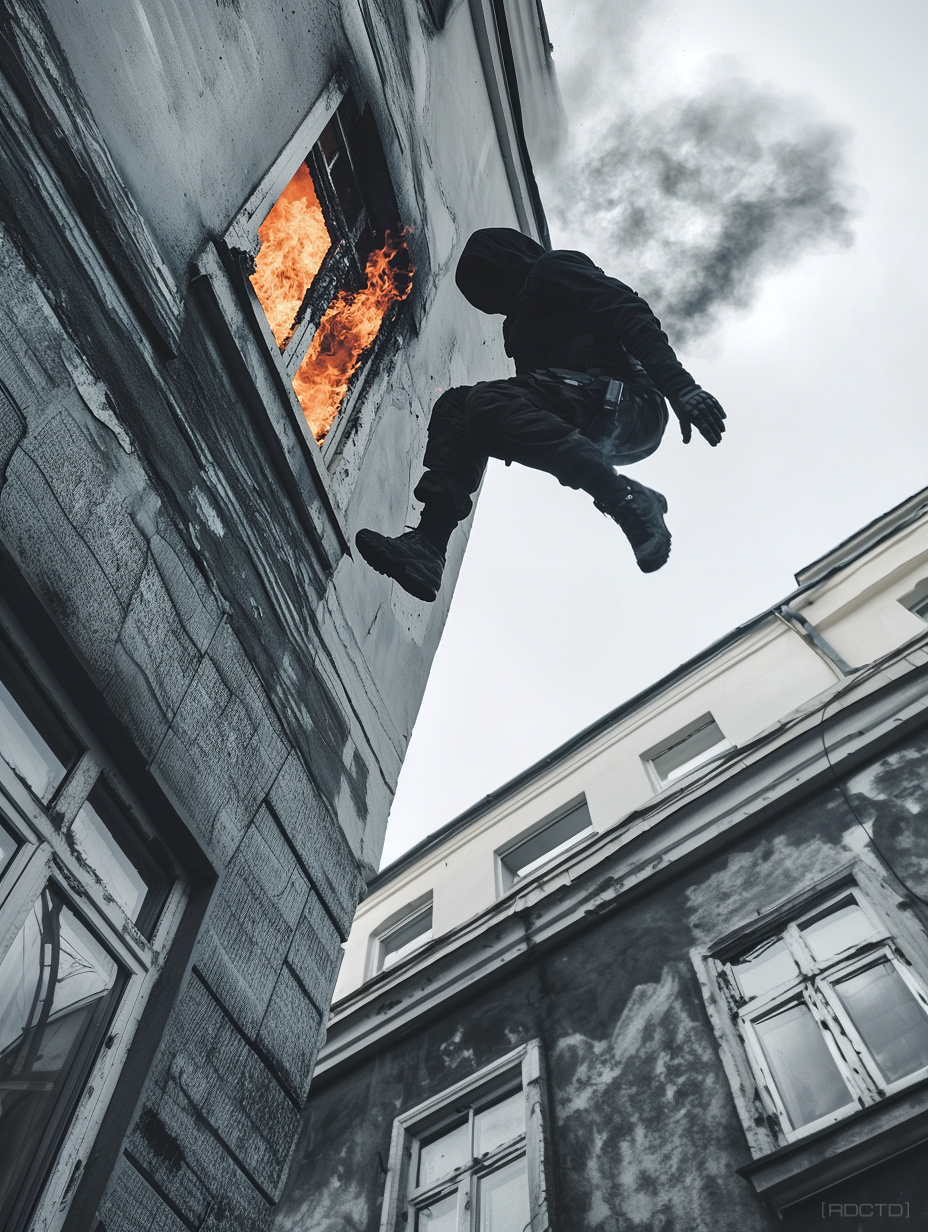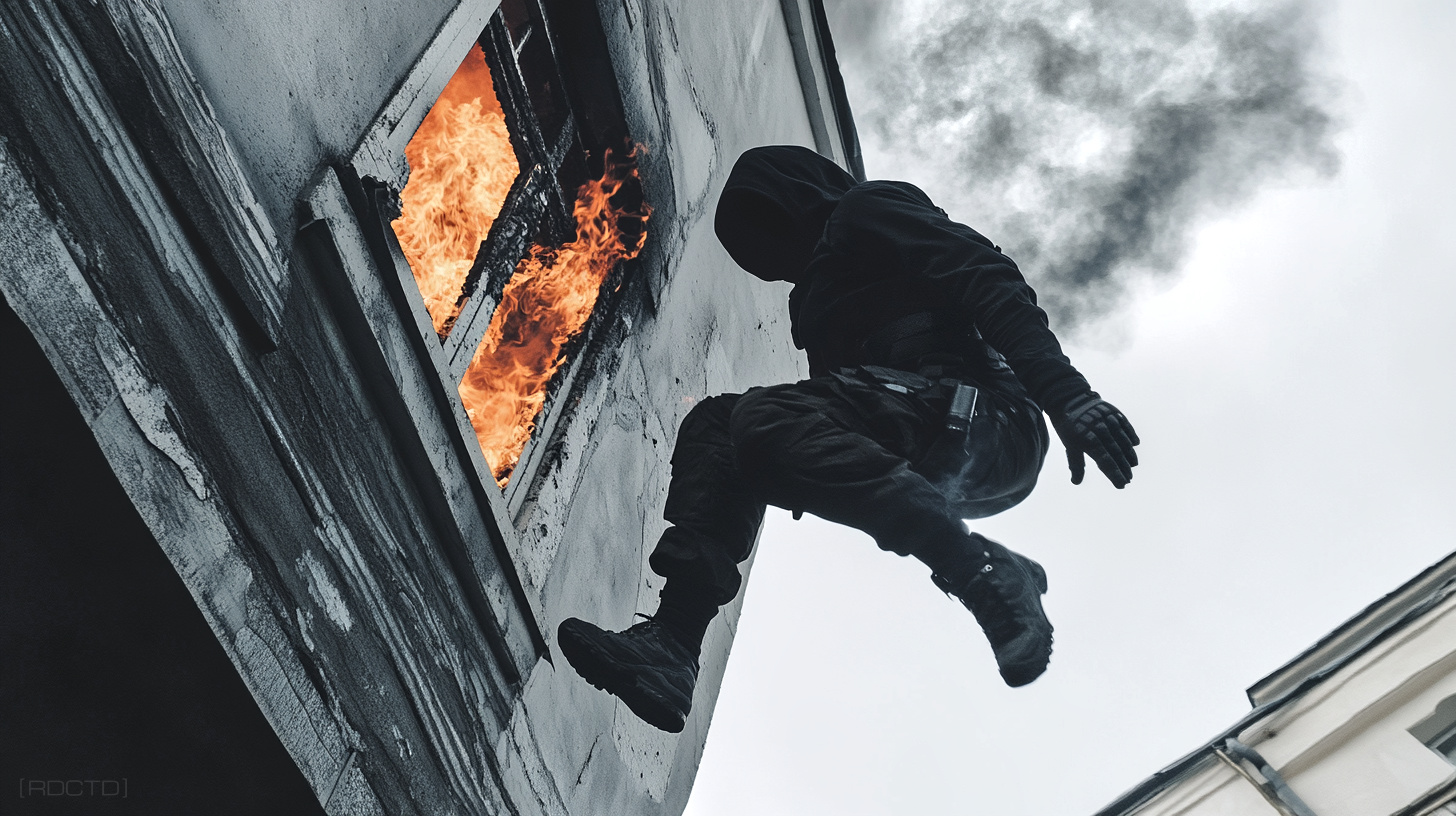 The covert operative guide to the ‘Fear Cycle’, a predictable pattern when someone experiences fear in extreme situations that, once understood, can be disrupted, controlled, or even weaponized.
The covert operative guide to the ‘Fear Cycle’, a predictable pattern when someone experiences fear in extreme situations that, once understood, can be disrupted, controlled, or even weaponized. ![]()
Fear is a biological response, but it’s also one of the most reliable psychological tools available to anyone operating in covert environments. Whether you’re walking through a hostile urban landscape, de-escalating a confrontation, or being interrogated at a border crossing – fear is present. Understanding how fear works in you and in others is the first step toward mastering it.
The body will lie to you in fear. It’s your job to separate the chemical reaction from the tactical reality.
Operatives who fail to grasp the “cycle” in the Fear Cycle often find themselves reactive rather than deliberate, which is how missions unravel. On the other hand, those who can read and influence fear in real time gain a critical edge over hostile actors and unpredictable environments. Fear, properly understood, becomes not just a survival instinct, but a strategic advantage.
![]()
![]()
THE FEAR CYCLE
A psychological loop that every human being experiences when confronted with perceived danger, real or imagined. It’s a survival mechanism rooted in our biology, designed to help us respond quickly to threats. But in modern environments, this cycle can be both a liability and a tool.
Understanding its components allows you to not only manage your own fear response under stress but also exploit the same cycle in others for strategy. Operatives who understand the structure of fear can move through hostile environments with control, manipulate outcomes in interrogation or recruitment, and maintain clarity when everything is falling apart.
![]()
Four Stages of The Cycle
1) Perception
2) Interpretation
3) Physiological Response
4) Action or Paralysis
![]()
Every fear response runs through this cycle. The mind perceives a threat, interprets it through memory or emotion, the body reacts chemically, and then action is taken – or not. In covert operations, you’ll see this cycle playing out in civilians under duress, hostile actors trying to bluff control, and even in operatives themselves. But most importantly, it can be manipulated.
![]()
![]()
STAGE 1) Perception
This is where fear begins, through the senses. A sound, a movement, a look, or even a silence can trigger the first signal to the brain. This is pure input. At this point, there’s no conscious thought – just the raw sensory data flooding in.
The brain doesn’t yet know if it’s facing a life-threatening situation or a false alarm. In covert operations, perception manipulation is a foundational element of psychological control. If you can shape what someone sees, hears, or senses, you can control their emotional and behavioral response without ever physically engaging them.
This stage is also critical for self-awareness. Operatives must train to regulate their own sensory input under pressure to avoid premature panic responses.
![]()
Tactical Applications
![]()
In both fieldwork and daily life, an operative can use perception as both a defensive filter and an offensive tool. On defense, controlling what you focus on allows you to keep calm under stress. On offense, subtly introducing a stimulus (out of place or just slightly off) can cause your subject to spiral into uncertainty or hyper-awareness. These micro-disruptions accumulate, building toward fear before the target even realizes what’s happening.
![]()
![]()
STAGE 2) Interpretation
Once a stimulus is perceived, the brain immediately seeks context. Is this danger real? Have I seen this before? Is this a threat to my life, or just an unfamiliar sound? This is where instinct, memory, and training collide.
The interpretation stage filters raw perception through personal experience, emotional history, and cognitive biases. It’s not the event itself that determines fear, it’s the meaning the brain assigns to it. That’s why two people can see the same situation and react entirely differently.
In field terms, this is the difference between a local civilian ducking for cover and an operative calmly scanning for the shooter.
For operatives, this stage is where discipline is either confirmed or exposed. If your internal wiring equates every unknown with worst-case scenarios, you’re a liability to yourself and your team. On the flip side, if you’ve trained your mind to assess threats objectively and without emotional noise, you’re capable of functioning with clarity while others are short-circuiting. The interpretation stage is also highly susceptible to influence.
Psychological operations (PSYOPS) exploit this by feeding selective information that shapes how a target interprets what they’re seeing, hearing, or experiencing – without changing the reality itself.
![]()
Phase Optimization
![]()
Understanding interpretation isn’t just about managing your own fear, it’s about gaining control over how others respond to you. If you can guide what people believe about a situation, you never need to force them into compliance—they’ll walk there on their own.
![]()
![]()
STAGE 3) Physiological Response
Once the mind has interpreted a threat, the body responds without asking for permission. The adrenal glands flood the bloodstream with cortisol and epinephrine. Heart rate spikes. Pupils dilate. Muscles tense up. Blood is redirected from non-essential systems (such as digestion) to major muscle groups.
This is the fight-flight-freeze mechanism in action. It’s primal and fast, and once it kicks in, you’re either in control of it – or at its mercy.
For the untrained, this response often leads to overreaction or paralysis. But for an operative, this is a window of opportunity. By understanding and conditioning the body’s natural reaction to fear, you can maintain control when everyone else is losing theirs. Through proper training, you can reduce the lag time between the chemical reaction and deliberate action.
This stage is also when an adversary is most vulnerable to psychological pressure, when their body is surging with energy and their decision-making is compromised. Recognizing those tells in others gives you the edge.
![]()
Effect Management
![]()
This stage is where physiology meets training. When you’ve drilled enough, your body stops reacting and starts responding. That’s the difference between getting through an ambush and being frozen in it.
![]()
![]()
STAGE 4: Action or Paralysis
At this stage, a decision is made, consciously or not. You fight, you flee, or you shut down. In operational terms, this is the moment where survival happens… or doesn’t. This is also where your conditioning, training, and mindset either come together or completely unravel.
People often assume their values or courage will guide them in a high-stakes moment, but that’s rarely the case. Your body will default to whatever you’ve rehearsed the most – physically or mentally.
If you’ve trained under stress, rehearsed responses, and built muscle memory, your brain will hand the wheel to those patterns. If you haven’t, it’ll search for the fastest way out – even if it’s the wrong one.
Response Control
![]()
![]()
For operatives, this is where leadership under stress becomes visible. You can’t wait for calm to act. In the chaos, even a flawed decision beats hesitation. The longer someone sits in indecision, the deeper fear takes root. Once paralysis sets in, pulling yourself (or anyone else) out of it becomes exponentially harder.
The antidote is preparation and intent. You don’t need to know the perfect move. You just need to move, decisively, in a direction aligned with your objective. The key is to break the loop before it owns you.
![]()
![]()
BREAKING THE CYCLE
For operatives, fear isn’t something to eliminate. It’s something to manage. The best field operators aren’t fearless, they’re masters of their own cycle. They know how to feel fear, but they never let it choose their next move.
![]()
Cycle Mastery
![]()
Breaking the cycle isn’t about becoming emotionless, it’s about regaining command when emotion hits. Every operator hits a wall at some point, and fear will be there waiting. The ones who survive are those who recognize the cycle for what it is: a pattern that can be interrupted, redirected, and used.
![]()
![]()
WEAPONIZING FEAR
Before you can weaponize fear, you need to accept a hard truth: most people are more afraid of the unknown than of pain. That uncertainty is your entry point. Fear, when used deliberately, becomes a non-lethal force multiplier – one that can collapse resistance, break confidence, and drive people to make choices they otherwise wouldn’t.
![]()
Weaponization
![]()
The goal isn’t cruelty, it’s control. Fear makes people predictable. Predictability makes them vulnerable. In covert operations, that’s often the edge that wins or loses the objective.
![]()
![]()
Fear isn’t weakness. It’s information. The strongest operatives don’t ignore fear, they read it, master it, and use it. When you know how the Fear Cycle works, you stop being a passenger to your emotions and start using them like any other tool in your kit.
![]()
// Fear strips away the fake. What’s left is your true level of readiness.
[INTEL : The ‘Cold and Calculating’ Method]
[OPTICS : Undisclosed, Eastern Europe]
![[RDCTD]](https://rdctd.pro/wp-content/uploads/RDCTD-Covert-Operative-Tradecraft-Guide-LOGO-tk.png)
![[RDCTD]](https://rdctd.pro/wp-content/uploads/RDCTD-Covert-Operative-Tradecraft-Guide-LOGO-mobile.png)

